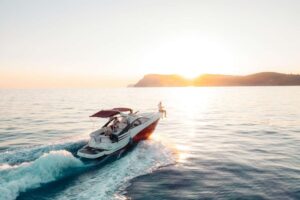Although many people dislike the idea of getting in the water when it’s cold outside, the harsher weather can frequently offer higher swells and stronger winds, which means more fun for surfers, kitesurfers and windsurfers.
With the freezing weather, a good wetsuit is essential. Check out how to find the best women’s wetsuits for surfing this winter in our easy guide.
Wetsuit Linings
Although not every winter wetsuit has a lining, as wetsuit technology advances, more advanced linings are becoming offered from a number of prominent surf brands.
Giving the wearer more warmth where it’s needed without the lost flexibility that thicker neoprene typically brings.
- Billabong – Furnace lining: The Furnace lining in Billabong’s wetsuits has been improved to use graphene instead of carbon, which traps and holds heat more effectively than standard hollow fibres.
- Rip Curl – Flash lining: The Flash lining is made of poly-fleece, which is hydrophobic, meaning it won’t hold water and will keep your body warm and dry.
Thickness
You’ll need at least 5mm around your core and 3-4mm on your arms and legs in cold water. However, if you’re a surfer or bodyboarder who’ll be spending a lot of time in the water waiting for your next wave, it’s worth upgrading to a 6/4mm or 6/5mm suit.
For more information and tips, have a look at this handy wetsuit sizing guide and discover your ideal wetsuit!

Seams/Stitching
The way the neoprene panels are linked together has a big impact on the wetsuit’s warmth, as it’s what keeps water out and is a good indicator of the suit’s quality.
If you’re buying a wetsuit for the winter, be sure it has glued and blindstitched (GBS) seams.
GBS indicates that the panels were glued together end-to-end before being sewn. However, the stitch only reaches a portion of the way through the neoprene, so there are no holes that let water in. As a result, the seam is completely waterproof, flexible, and long-lasting.
Hood
Brain freeze is one of the most unpleasant aspects of cold water surfing. Fortunately, surf hoods exist, allowing you to wear all of that neoprene goodness on your head as well as the rest of your body.
Advantages of an integrated hood include less flushing down the back of your neck, not having to remember to grab your surf hood as well as your wetsuit, and being stylistically coordinated (which may or may not be of huge importance to you).
Use Booties with Straps
Booties will keep your feet toasty while also protecting them from jagged seafloor pebbles.
Booties with straps across the ankle provide additional foot support and can be adjusted to reduce the quantity of water that enters them.
To get the most out of your time on the water, making sure you’re dressed appropriately with suitable accessories is crucial. Hopefully, this will help you to choose the best wetsuit for this winter!






